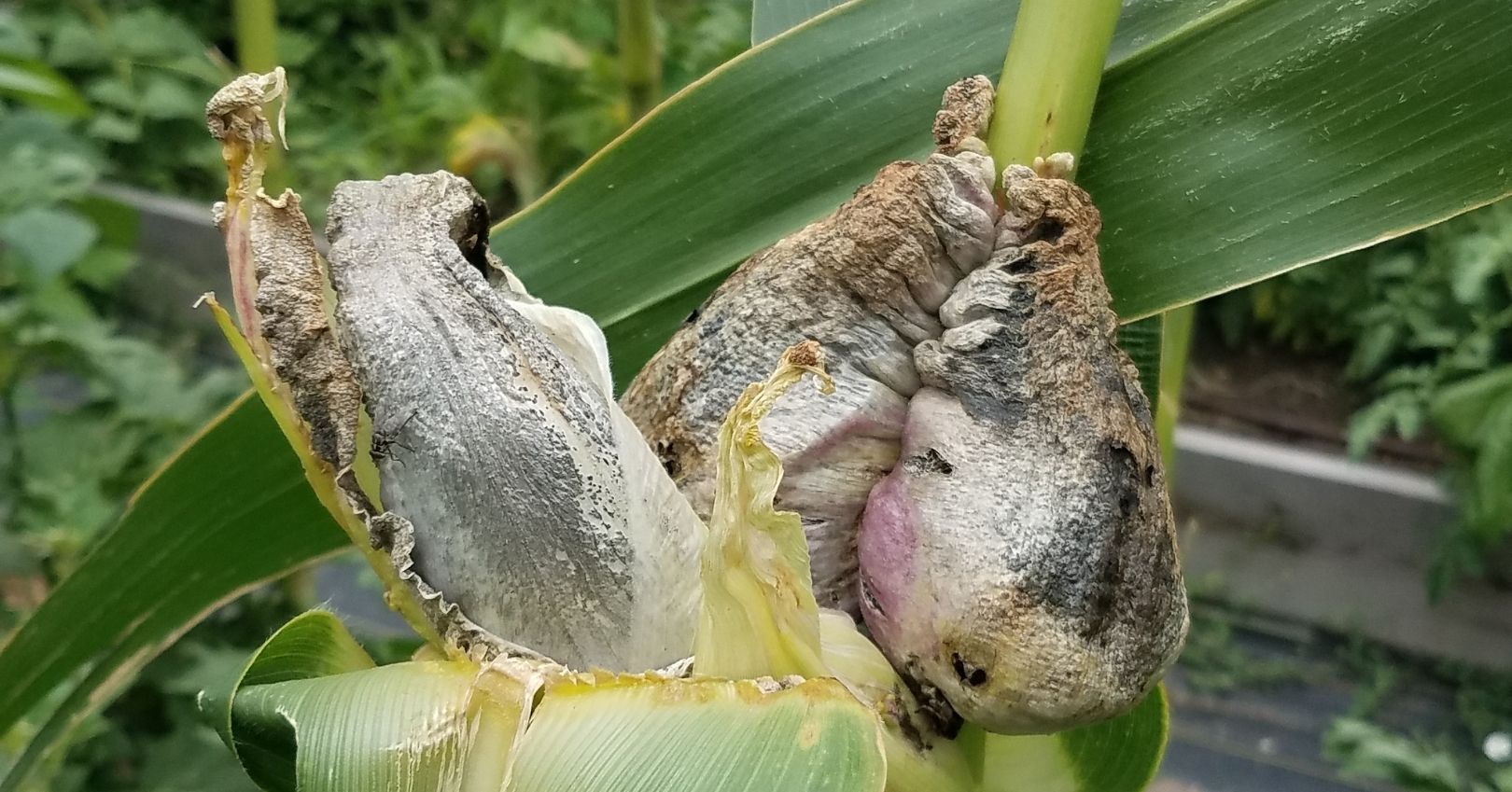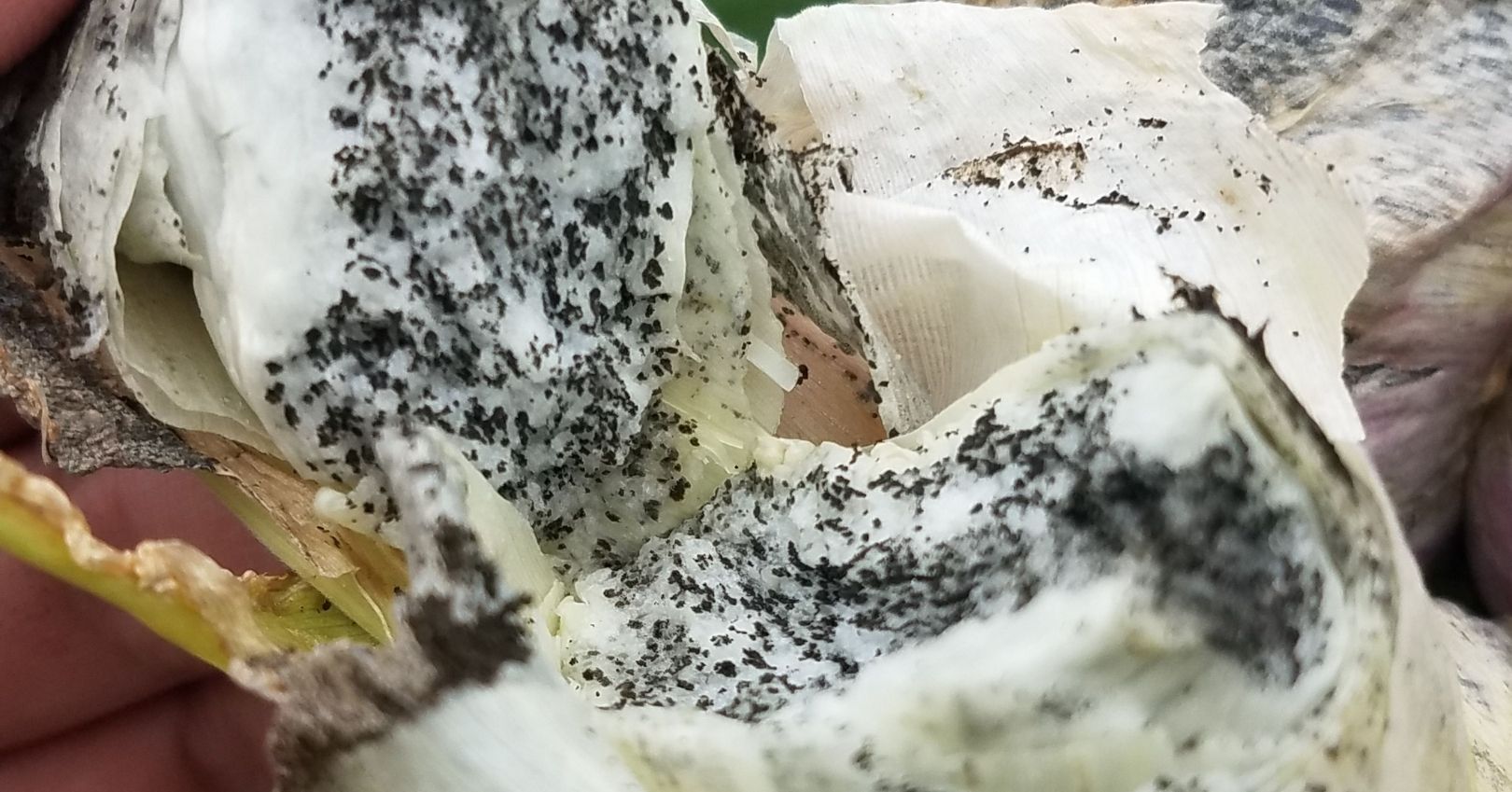Corn Smut


Casual Agent
Corn smut is caused by the fungus Ustilago maydis.
Symptoms
The symptoms of corn smut are very characteristic. Galls (tumors) are formed on ears, tassels, stalks and leaves. Initially galls are white to light green turning dark when gall membranes rupture and a mass of dark spores emerge.
Disease Cycle
The fungus produces dark spores that can overwinter in the soil for several years. When temperatures range from 50-95°F and moisture is present, the fungus produces a second type of spore that is blown by wind or is splashed by water. Once the spores land on young corn plants, they germinate and produce hyphae that enter the plant tissue through stomates or through wounds from de-tasseling, hail, or insect feeding. The fungus causes the plant cells at the infection site to multiply, forming a gall. Over time, the fungus invades the galls and dark powder-like spores are produced that are then blown to infect other corn plants or to overwinter in the soil. Any part of the plant can be infected at any growth stage. Infections in the ear are most common and occur when the spores land on the silk and grow down into the ear.
Management
- Use resistant varieties. The best option is the use of varieties resistant to corn smut. The following resistant varieties have been reported from South Dakota State University: ‘Ambrosia’, ‘Apache Gold’, ‘Cup’, ‘Aztec’, ‘Bellringer’, ‘Calumet’, ‘Capitan’, ‘Cherokee’, ‘Comanche Hybrid’, ‘Comet’, ‘Golden Gleam’, ‘Golden Security’, ‘Serendipity’, ‘Merit’, ‘Stylepak Hybrid’, ‘Sweet Sue’, ‘Tendersweet’, and ’Wintergreen’ (pubstorage.sdstate.edu/AgBio_Publications/articles/FS918.pdf).
- Maintain recommended fertility levels. Plants grown under high nitrogen levels or with high rates of manure are more susceptible to the disease.
- Deep plowing of corn stalks moves infected tissue into deeper soils, reducing disease incidence.
- Avoid plant injury and insect damage. Fewer injuries reduce the number of entrance points for the fungus, thus reducing disease incidence.

